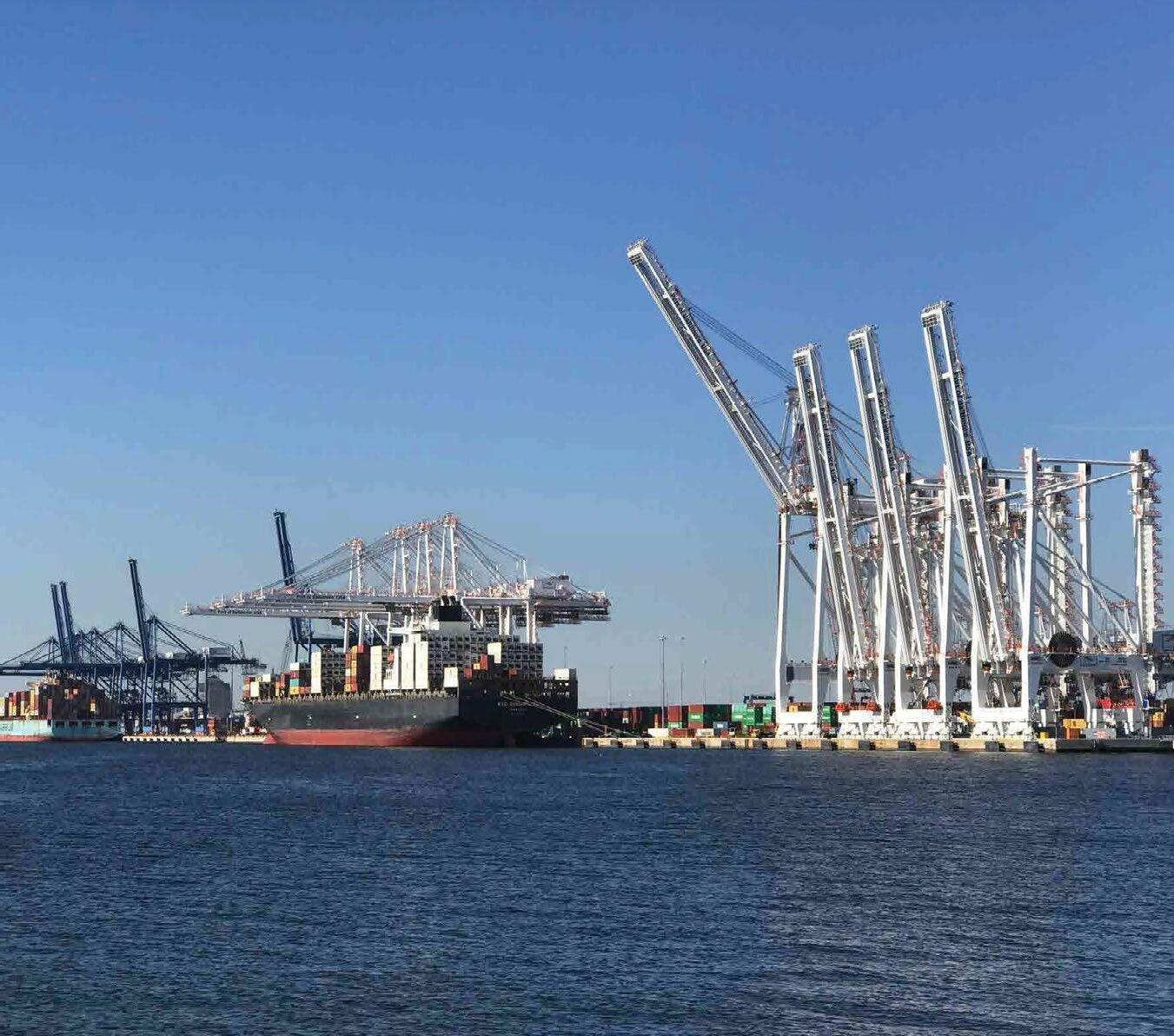
2 minute read
The Port of Baltimore Economic Impact
Approximately 37,300 jobs in Maryland are generated by port activity. 15,330 are direct jobs generated by cargo and vessel activities at the Port. 16,780 are induced jobs, i.e. jobs supported by the local purchases of goods and services by direct employees. 5,190 are indirect jobs, i.e. jobs supported by the business purchases of the employers who create the direct jobs.
The Port of Baltimore is a major source of personal and business revenues in the State of Maryland. The Port was responsible for $3.3 billion in personal income. The Port’s average annual salary for the direct job holder is 9.5% higher than the average annual wage for the State of Maryland (U.S. Bureau of Labor Statistics). The Port generated $2.6 billion in business revenues. Activities of the Port generated $395 million in state, county, and municipal tax revenues.
Approximately 101,880 other jobs in Maryland are directly related to activities at the Port. Related jobs are those with Maryland companies that choose to import and export their cargo through the Port of Baltimore, but they have the option of shipping their products or supplies through other ports.
Combining direct, induced and indirect jobs with related jobs, there are over 139,180 jobs linked to the Port.
For more information on the Port of Baltimore, please visit www.mpa.maryland.gov railroading (DSR), or the next stage following precision scheduled railroading.
CN says DSR will modernize the railway’s technology infrastructure in the cloud and provide customers with improved visibility into the supply chain. CN will work with Google Cloud to develop an intuitive digital platform powered by Google Cloud’s artificial intelligence (AI) and machine learning tools so that customers will have more visibility for planning, shipping, tracking and payment of services, according to a company press release.
• On August 29, 2019, Kuehne + Nagel and Air France KLM Martinair Cargo (AFKLMP Cargo), two leading players of the airfreight industry, collaborated to improve integration of their electronic booking processes. It is the first time that an airfreight carrier and a global logistics provider create a direct system-to-system connection that transforms manual quotation and capacity booking process into a digital automated solution, enabling collaborative relationships and next-generation supply chain practice.
Following the successful proof of concept, both companies have agreed to further develop the solution and to start the roll-out in Europe and South Asia Pacific, according to the company press release.
• In June, 2021, Hapag-Lloyd and Singapore-based Ocean Network Express (ONE) Pte. Ltd. announced they have completed integration onto the TradeLens platform, helping ensure a more timely and consistent view of logistics data for their containerized freight around the world. TradeLens is a neutral, third-party platform launched by IBM and A.P. Moller - Maersk to help modernize the world’s supply chain ecosystems, and is run on IBM Cloud and IBM Blockchain. The TradeLens ecosystem now includes more than 300 organizations—encompassing ten ocean carriers and data from more than 600 ports and terminals.
And Finally…

Sustainability and carbon emission control issues have become top agenda items for the entire intermodal distribution structure.
According to McKinsey’s Global Energy Perspective 2022, the transportation sector is projected to experience the fastest transition to electricity, which is primarily the result of passenger electric vehicles (EVs) reaching cost parity with internal combustion engine vehicles.
Freight transportation accounts for up to 8 percent of global greenhouse-gas (GHG) emissions, and as much as 11 percent when warehouses and ports are factored in, according to the McKinsey report. “Decarbonizing freight transportation from start to finish will require owners and operators to fundamentally rethink how infrastructure supports electrification and how new technologies can enable a more sustainable future.” X










